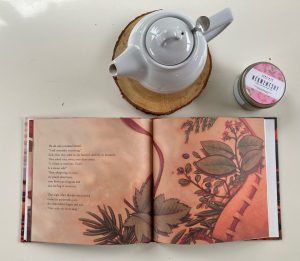11 Shi-Shi-etko
anonymous
Contributor’s Biography:
Some students chose not to identify themselves however gave their consent to share their work
Resource Overview
Storybook: Shi-Shi-etko by Nicola Campbell
Campbell, N. (2005). Shi-shi-etko. Groundwood Books. https://resources.fnesc.ca/CatalogItems/Details/146
Grade Level: Grades kindergarten to three
Description:
The story, Shi-Shi-etko, displays Indigenous practices and perspectives as a girl named Shi-Shi-etko is preparing to leave for Residential School. The book highlights the significant roles that Mother Earth and her family play in her life. The resource shows how “learning is holistic, reflexive, reflective, experiential, and relational (focused on connectedness, on reciprocal relationships, and a sense of place)” (First Nations Education Steering Committee (FNESC), 2014). Shi-shi-etko has already experienced connectedness through her community and surrounding land. However, as she is soon to attend Residential school, the story calls attention to the emotional attachments to the girl’s homeland. In short, the tale empathizes with the character who must leave her culturally embedded roots (FNESC, 2014). In the book, her family discusses cultural practices like oral stories and experiences (FNESC, 2014).
Significant Indigenous Knowledge:
The book Shi-Shi-etko demonstrates that Indigenous Knowledges can be taught through storytelling. The resource uses the character as an embodiment of Indigenous Ways of Knowing and learning. It demonstrates that Shi-Shi-etko learns her cultural foundations from her family and creates connections with the land. She asks questions regarding plants, their uses, and their cultural significance. Through discussion, storytelling, and first-hand experiences with tangible objects, she learns more about the land, relevant to her Indigenous roots, medical practices, spiritual enlightenment, and survival skills.
Necessary Prior Knowledge:
Before using this resource, it is recommended that the educator becomes familiar with the story ahead of time. By reading the story ahead of time, the educator can ensure that the resource is appropriate for their audience. The story could trigger emotional reactions; therefore, the educators should prepare for the various responses the story will have on their participants. As this story shares the experience of a child preparing to attend an implied Residential School, the educator should familiarize themselves with the history of Residential Schools from an Indigenous perspective. Educators should research relevant information and resources surrounding Residential Schools to understand better how to approach the heavy topic with primary participants. The educator should be prepared to refer participants to an Indigenous Support worker or a counsellor if necessary. As this topic may be challenging for families with Residential School Survivors it is highly recommended that the educator shares a notice with parents beforehand, giving students the choice to opt out.
Suggested Learning Activities
For the first possible activity, the educator could send home a letter explaining the story and the participants’ homework to create a personal memory bag. The memory bag serves as a way for families to connect by learning more about their own culture and family values by getting participants to find items that symbolize their family and culture(s). When the educator has received all memory bags, each participant will share the items in their memory bag with the class. The activity will provide the opportunity for the educator and participants to understand their peers more personally. Additionally, it opens up dialogue and questions between the participants and community, expanding their knowledge about other cultures (The Manitoba Teacher Society, 2018).
For the second activity, the educator will utilize the words found on the sort and predict activity sheet within the resource. The educator will provide the keywords to all the participants. Participants will then sort through the words and try to predict what they mean and any connections to the terms. Educators can also connect the words back to the story as they work with the words and expand their knowledge (First Nations Education Steering Committee (FNESC), 2020).

Shi-shi-etko
Image by: Rachel Chong BY-NC-ND (Attribution Non-Commercial No Derivatives)
References
Campbell, N. (2005). Shi-shi-etko. Groundwood Books.
First Nations Education Steering Committee. (2014). First Peoples’ principles of learning. http://www.fnesc.ca/first-peoples-principles-of-learning/
First Nations Education Steering Committee. (2020). Shi-shi-etko sort and predict activity. http://www.fnesc.ca/wp/wp-content/uploads/2020/07/IRSR-5-rev-2-LM-Part-1-IRSR-5-2020.pdf
The Manitoba Teachers Society. (2018). Shi-Shi-etko. https://www.mbteach.org/pdfs/pd/osd/2018/MTS_OSDStories_Shishietko_ENG_2018.pdf

